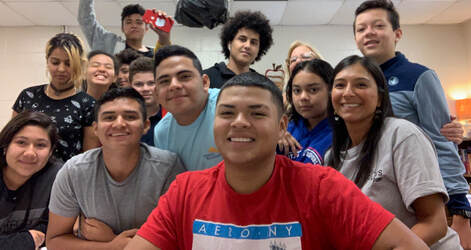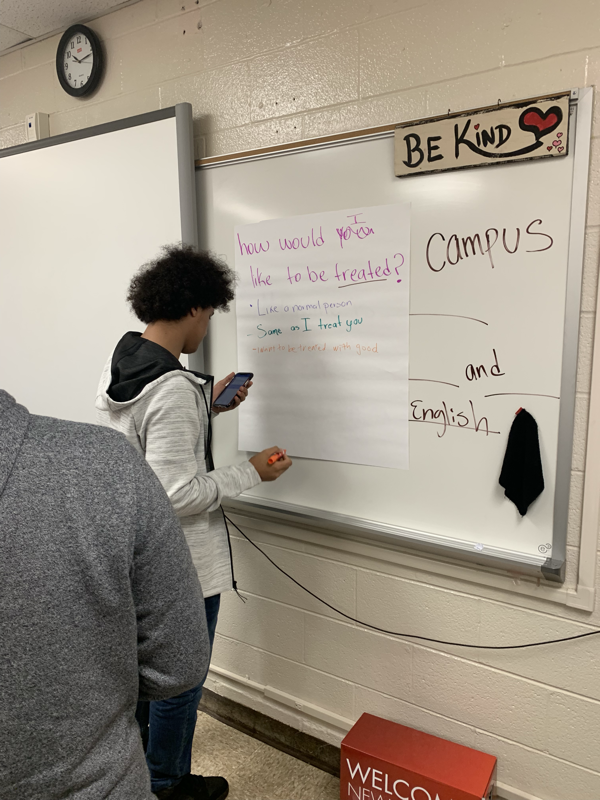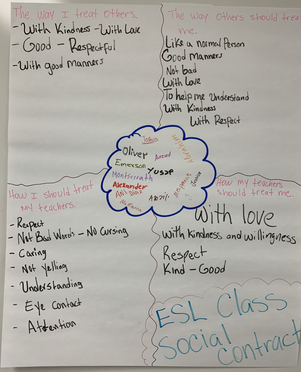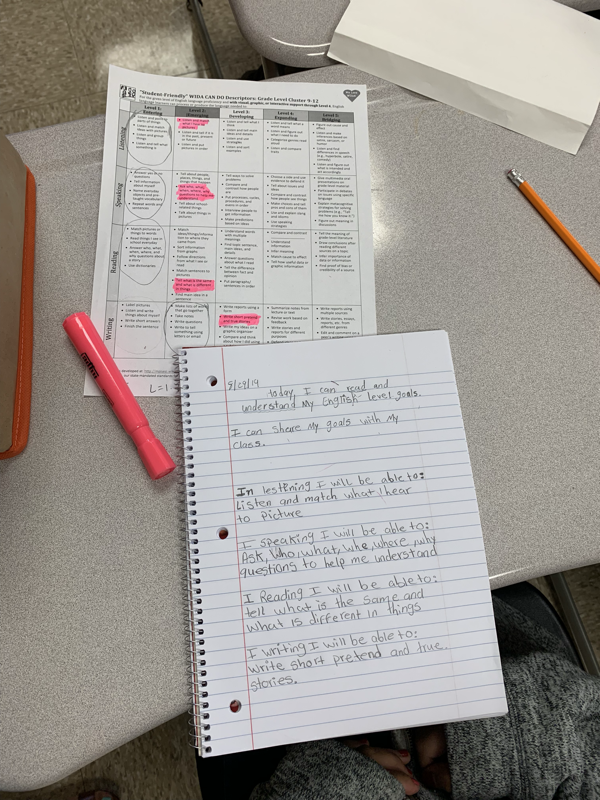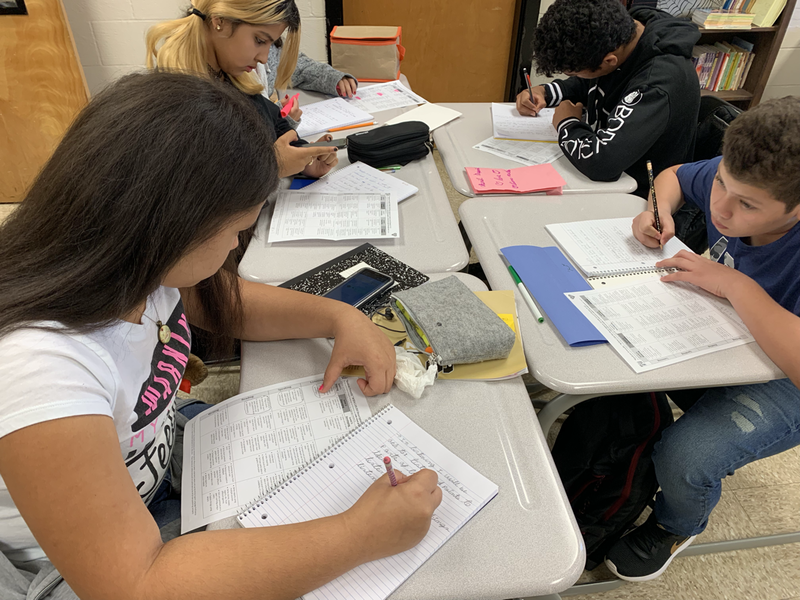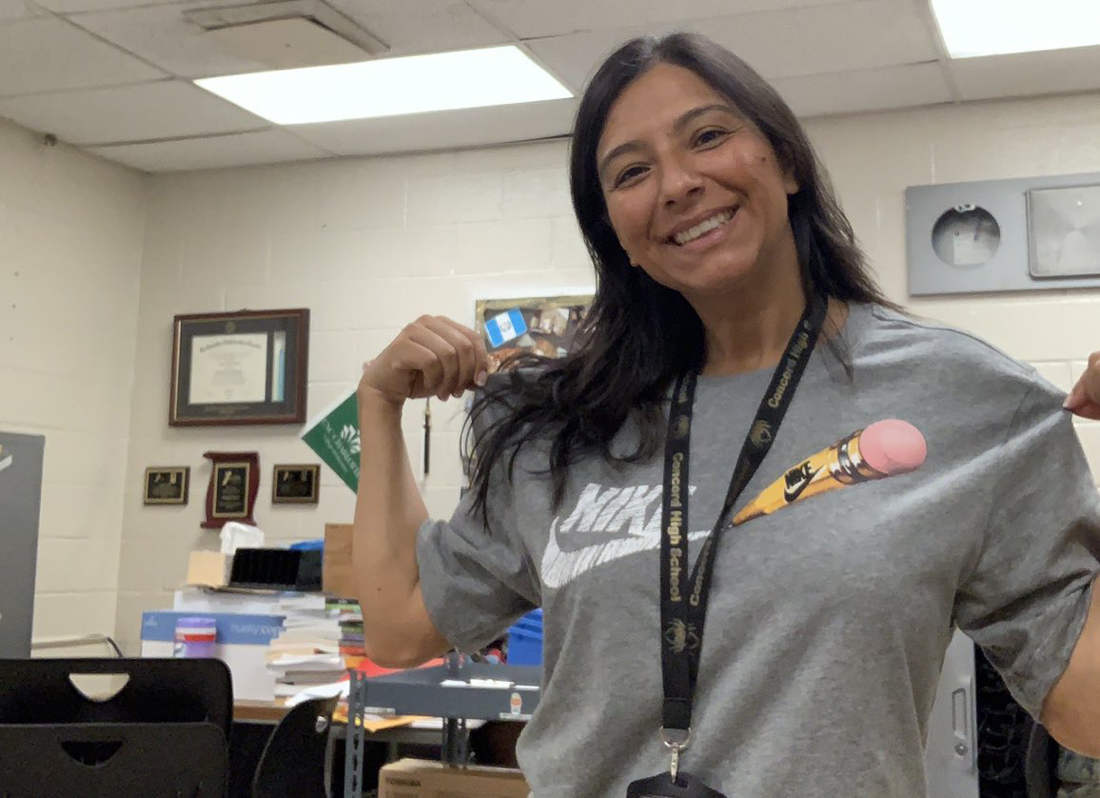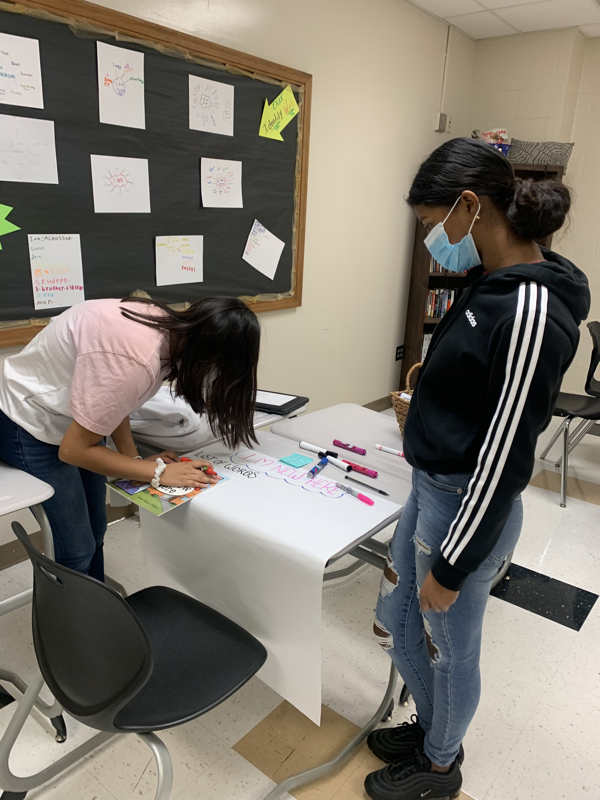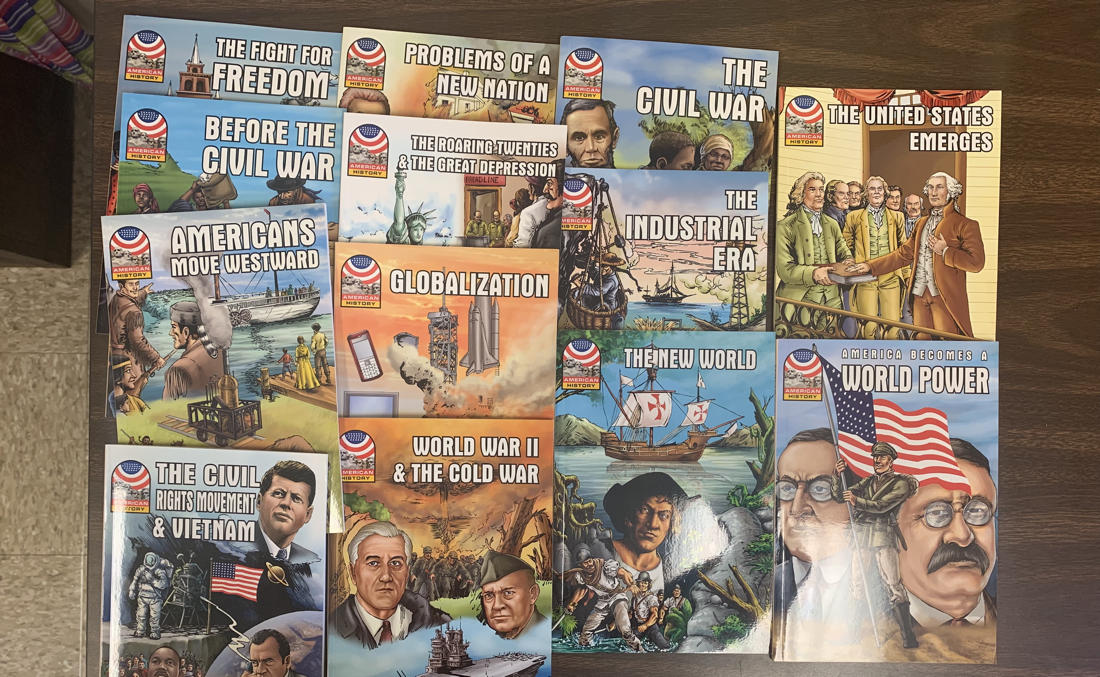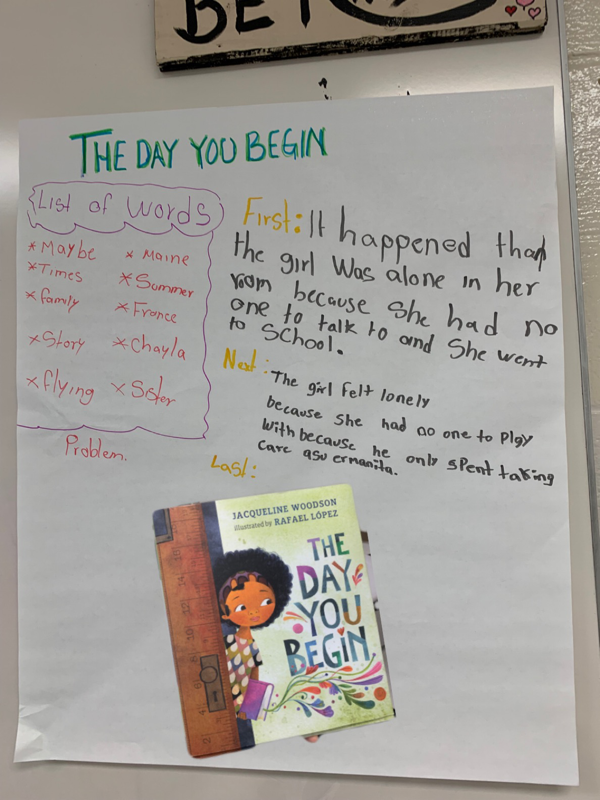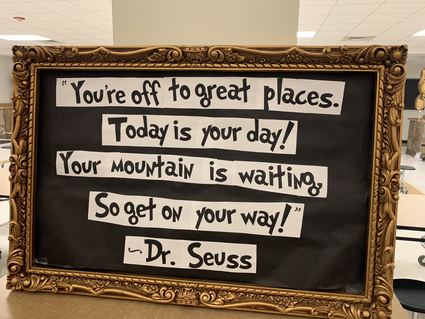|
August 26th, 2019 was the first day of school for students in my county. What an exciting day to finally meet all our new freshman students and to see returning students. I was more so thrilled to finally meet our 2019-2020 newcomer students who enrolled in the USA school system for the very first time.
I am not sure how a high school schedule is set up in other counties/states, but at our school, we offer only one period class strictly for English as a Second Language (ESL) services. The rest of our period classes are inclusion classes where our ESL services are provided at the same time core instruction is provided. This means that for one period students come to my classroom and for the other three periods you'll find me in different classrooms throughout the building supporting English learners. The only class period we offer in our ESL classroom is the English for Beginners course. This course is designed with newcomer English learners in mind. In this class period, newcomers receive the foundations of the English language as well as any cultural views and lessons students may need to begin a successful and strong year in the United States. To get an idea of what my day looks like, check out my daily schedule here! Our First Lessons for Newcomers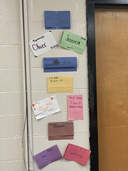
If you have not yet read Carol Salva's blog post on activities to welcome our newcomers, I highly recommend you read it. Not only does she have a fantastic book where she shares so many strategies that work with newcomers, but she's always finding/sharing new activities that help support our newcomers.
If you are interested in her book - Boosting Achievement - find it here! Name Tents - On day one we started by creating a name tent to help us get to know one another and to introduce ourselves to the class. I modeled it first...showed them how to create one, then I modeled introducing myself using these sentence stems: My name is ____(name)_______. I speak ___(language)_____. I speak ___(language) and ___(language)_____. If more than 1 This is a great activity to honor name pronunciation and encourages students to embrace their home language and KNOW that though learning English is important, their native language is important as well. Now that we know one another's name and languages, we use these awesome name tents to decorate our classroom.
Social Contract - I have several students with interrupted Formal Education (SIFE). A social contract is just a list of expectations students and teachers have for our classroom. These expectations could be anything we want to help us be successful in an English learning environment.
I posted three questions around the room and divided students in groups to work at each question. Questions were posed on chart paper and students were to add words, images, phrases, or sentences. The questions students responded to were:
This was definitely a great opportunity for me to see students level of English proficiency. Students rotated to all three charts and voiced their ideas and opinions as to how we should behave in our ESL classroom. *I also had a chart created and shared with them after they finished their charts. These were expectations I had as a teacher and were non-negotiable. *How does my teacher want to be treated?
We used the charts students created to choral read aloud and learn how to point to each word as we read. This strategy helps students understand how the English language works and how the sounds we are making connects with the written text.
We took all the words or phrases we agreed with and added them to a single chart where we all agreed and signed. This chart will remain posted in our classroom all year long! As we get new students, we'll review the agreement and add our new students' name to the chart.
WIDA scores and Goal Setting - Something I do every year with my students is making sure that they begin the school year understanding their ACCESS scores. They need to be empowered by the Can Do Descriptors on what they CAN do and what they are expected to accomplish during the school year.
To read more about this process, check out this post on The Can-Do Approach using the WIDA standards.
Here is an excellent video demonstrating our newcomers' ability to share what they CAN do and what they will be able to do by the end of the school year.
Understanding Language Acquisition - It is very important for our newcomers to understand how language acquisition works and what they need to work on to learn the English language as quickly as possible. Our students have 3-4 years to learn a new language & obtain the number of credits to be able to graduate.
It's important for students to understand and respect the language acquisition process. They must know the difference between Basic language skills vs academic vocabulary (BICS & CALP). I provided each student with a survival English list as a guide to what they need to learn to be able to engage in content. Students will keep this in their notebooks and will be checking off as they learn something and list what they need to learn.
Overall, our first week was just epic! Our inclusion services are working out and the excitement our English learners have is just so contagious. I am super happy to be a Spider again this year!!
Compelling books - I received LOTS of donations to our class library this year. Thanks to #ClearTheList movement, our students now have a lot of books they can read and enjoy!!
Thank you for reading!
2 Comments
Marisa Tyd
9/2/2019 12:21:24 pm
Thank you so much for this post!! It has helped me a lot with planning for my first year teaching (which starts on Wednesday)! I knew I wanted to establish norms with my students but I love this detailed process. Looking forward to learning more this year--thank you again!
Reply
Emilyfrancis
1/2/2020 11:38:51 am
Hi Marisa,
Reply
Your comment will be posted after it is approved.
Leave a Reply. |
Categories
All
Archives
May 2024
|
||||||
